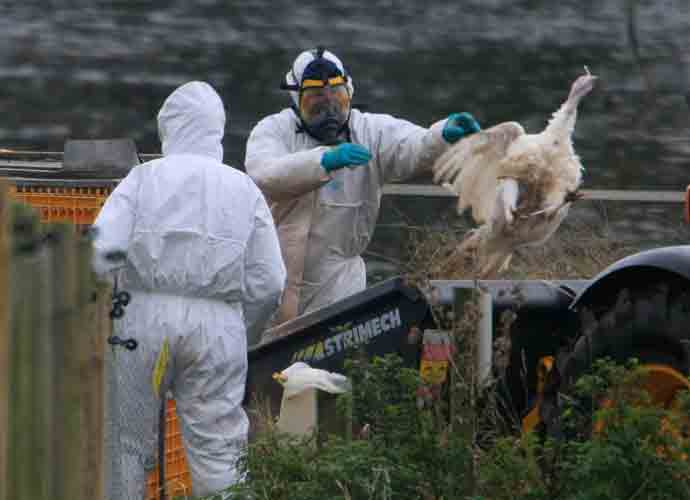First Human Death From The H5N2 Strain Of The Bird Flu Announced By World Health Organization
The World Health Organization (WHO) confirmed that a 59-year-old man in Mexico died from the first known human case of the bird flu strain H5N2.
“On May 23, 2024, the Mexico International Health Regulations (IHR) National Focal Point (NFP) reported to PAHO/WHO a confirmed fatal case of human infection with avian influenza A(H5N2) virus detected in a resident of the State of Mexico who was hospitalized in Mexico City,” WHO stated on their website June 5.
H5N1 and H5N2 strains of avian flu have spread among birds for a long time, and H5N1 has infected nearly 900 humans worldwide who had prolonged close contact with infected birds or animals.
“This is the first laboratory-confirmed human case of infection with an influenza A(H5N2) virus reported globally and the first avian H5 virus infection in a person reported in Mexico,” it added.
It also noted that while the “source of exposure to the virus in this case” remains undetermined, H5N2 viruses were “reported in poultry in Mexico.”
“According to the IHR (2005), a human infection caused by a novel influenza A virus subtype is an event that has the potential for high public health impact and must be notified to the WHO,” the organization noted. “Based on available information, WHO assesses the current risk to the general population posed by this virus as low.”
The WHO also revealed on its website that the patient “had no history of exposure to poultry or other animals.”
“The case had multiple underlying medical conditions,” it said. “The case’s relatives reported that the case had already been bedridden for three weeks, for other reasons, before the onset of acute symptoms. On April 17, the case developed fever, shortness of breath, diarrhea, nausea and general malaise.”
A week later, the case went to seek “medical attention, was hospitalized at the National Institute of Respiratory Diseases ‘Ismael Cosio Villegas’ (INER per its acronym in Spanish) and died the same day due to complications of his condition.”
“Results from Real-Time Polymerase Chain Reaction (RT-PCR) of a respiratory sample collected and tested at INER on April 24 indicated a non-subtypeable influenza A virus,” the WHO confirmed.
“On May 8, the sample was sent for sequencing to the Laboratory of Molecular Biology of Emerging Diseases Center for Research in Infectious Diseases (CIENI per its acronym in Spanish) of INER, which indicated that the sample was positive for influenza A(H5N2),” it noted. “On May 20, the sample was received at the Institute of Epidemiological Diagnosis and Reference (InDRE per its acronym in Spanish) of the Mexico National Influenza Centre for analysis by RT-PCR, obtaining a positive result for influenza A.”
No other cases were reported during the investigation.
Additionally, out of the 17 contacts identified and observed at the hospital where the patient died, one reported having a runny nose between April 28 and April 29.
The samples from these hospital contacts between May 27 and May 29 tested negative for influenza and SARS-CoV 2.
Twelve more contacts, seven who were symptomatic and five who had been asymptomatic, had been identified near the patient’s home.
“Samples of pharyngeal exudate, nasopharyngeal swabs and serum were obtained from these individuals,” the WHO stated.
“On May 28, the InDRE reported that all 12 samples from contacts near the patient’s residence tested negative for SARS-CoV-2, influenza A and influenza B, as determined by RT-PCR,” they mentioned. “The results of the serological samples are pending.”
Scientists are monitoring changes in the virus, which could signal that bird flu is adapting to circulate more easily among humans.
In early May, the Centers for Disease Control and Prevention (CDC) reported that the H5N1 bird flu had spread to 36 dairy cow herds across nine states since April 30.
The U.S. Department of Agriculture (USDA) took measures to address the situation, including collecting ground beef samples from retail stores in states impacted by the bird flu outbreaks.
The samples would be tested to confirm the presence of any viral particles. Previous studies found these particles in cow’s milk samples, with as many as 1 in 5 samples having tested positive.
As a part of containment efforts, the USDA mandated that dairy cows test negative for bird flu before they are transported across state lines. This choice came after criticism from infectious disease experts who claimed that poor testing inhibited an accurate assessment of the outbreak’s scale.
In late May, Australia confirmed its first human case of bird flu and a different outbreak of the H5N1 strain on a poultry farm in the state of Victoria.
The infected patient was a child who contracted the strain while they traveled in India.
Authorities in Victoria revealed that the child endured a severe infection but has since then made a complete recovery.
Notably, contact tracing efforts did not identify any other cases related to this incident, and health officials highlighted the minimal risk of the virus circulating quickly between people.
RELATED ARTICLES
Get the most-revealing celebrity conversations with the uInterview podcast!







Leave a comment